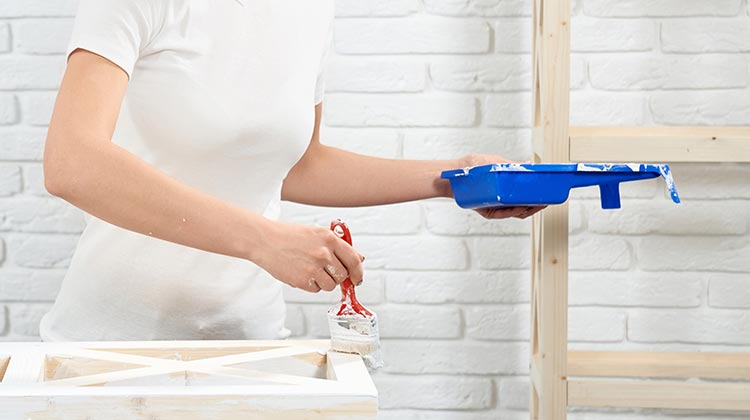
When shopping around for paint, the topic of primer inevitably comes up. Is it really needed, though? Or is it just an extra expense? There’s not an easy answer to this question. In some cases, it’s essential to make sure the new paint job looks good and can help save money because fewer coats will be needed. In other cases, it’s not needed and can be a waste of money. But, how can you tell? Below are four times primer is needed, and three times it can be skipped.
Yes: Painting Over a Glossy Surface
Paint doesn’t adhere easily to a glossy surface. When shopping for cabinet paint, for instance, go ahead and pick up primer, too. Since a gloss finish is typical for cabinets, a primer is going to be necessary to help the new coat of paint stick. Without it, the new coat of paint may end up peeling or bubbling and will not last very long. It’ll be easy to rub off in areas where it doesn’t stick well. Lightly sanding the surface prior to using the primer can help it adhere better, which leads to a nicer finish in the end.
Yes: Fix for Porous Surface
Porous surfaces suck in the paint, meaning it’ll take more coats to get a solid color. On top of this, the paint won’t be pulled in evenly, so the paint can end up looking patchy even after a few coats are applied. To prevent this, when painting a porous surface like clean wood, always use a primer. The primer fills in the surface, creating a smooth finish perfect for the first coat of paint.
Yes: Cover Stains and Other Issues
When the surface to be painted has stains, primer can help hide them. It is a good idea to try to clean the stains first, but if they can’t come off, the primer will work. Primer can also be used to hide some imperfections in the surface or, when a specialty primer is used, help to hide odors that might be present. Any time there are issues like these, opt for a primer to create the right surface for painting.
Yes: Change From Dark to Light Color
Changing from a dark to light color can be more challenging because the dark color is going to be seen through the lighter color. Other than using many coats to fully cover up the older color, using a primer will work. The primer can be used to cover up the dark color better, leading to fewer coats of the new color. Overall, this is going to help the painter save a significant amount of money, as it reduces the amount of paint needed to fully cover the old paint and prevent it from showing through.
No: Painting Clean Surface
When a surface is clean and the previous finish is a low-gloss finish, a primer may not be necessary. A room that isn’t used frequently, for instance, may not need primer, as the walls are clean and ready for the new coat of paint. Primer can still be used, but it may be an additional cost that isn’t really needed. It may be possible to test paint a small piece to see if primer will be beneficial or if it won’t make a difference. If it won’t make a difference, go ahead and skip it.
No: Changing to Similar Color
Though changing from a dark color to a light color requires a primer, the opposite isn’t true. It’s also not necessary to use primer when painting a similar color or shade. For touch-ups on a wall, for instance, the same color will be used, so primer isn’t needed. If the new color is within a few shades of the existing one or much darker, the primer likely isn’t going to make a big difference.
No: Using a Self-Priming Paint
There are self-priming paints available that include a primer and paint all in one, so it’s not necessary to buy both primer and paint. These are good to use when the person painting isn’t sure if a primer is needed. Be sure to only purchase high-quality paint, as the lower quality self-priming paint may not be as durable or provide enough coverage to reduce the need for multiple coats.
When deciding if a primer is needed, consider the surface, the colors used, and other details. Sometimes, it may be essential, but other times, it can be skipped. Knowing when to use it and when to avoid it can make a difference in the end result of the paint job or in how many coats are needed to make the project look amazing.
related post
related store
TBD

Leave a Reply